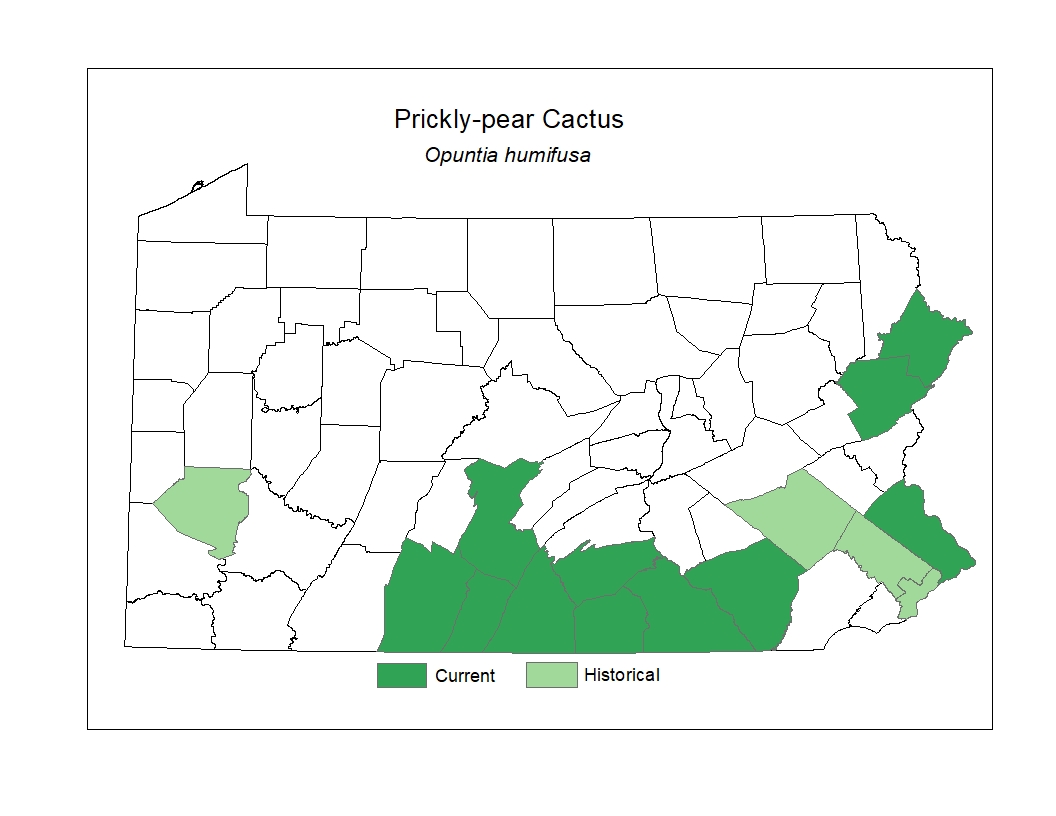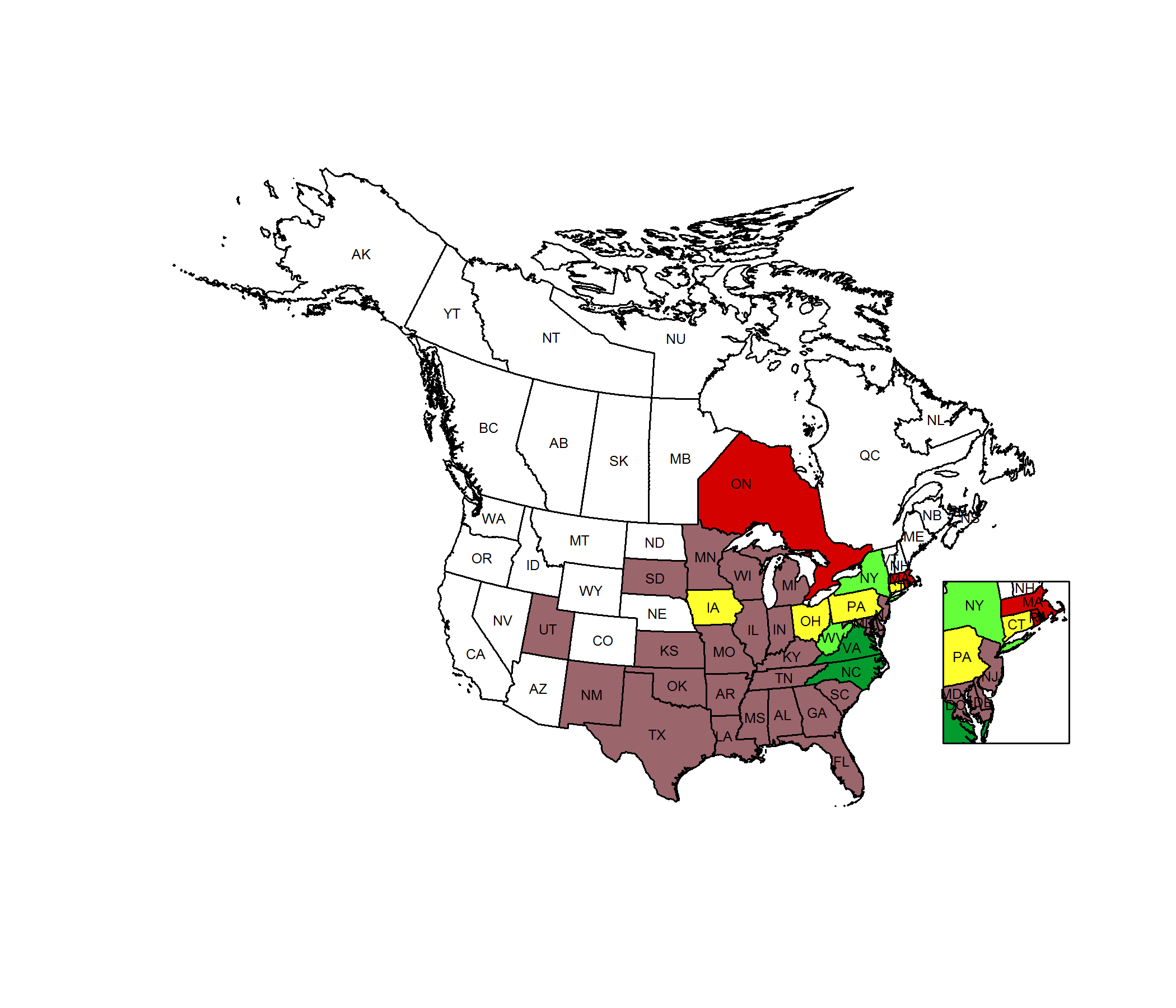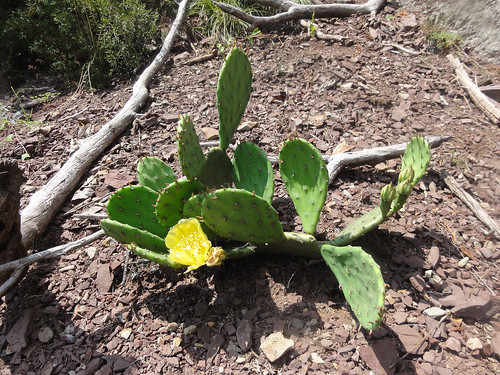 Species Factsheets
Species Factsheets
Opuntia humifusa
Eastern Prickly-pear Cactus
State Status: Pennsylvania Rare (PR)
PBS Status: Pennsylvania Rare (PR)
Federal Status:
Global Rank: G5
![]() rank interpretation
rank interpretation
State Rank: S3
Did You Know?
Native Americans have used this species to treat wounds, warts and lung ailments.
Description
Eastern prickly-pear cactus (Opuntia humifusa) is a perennial herb forming mats or clumps. The stems are shaped into fleshy, flattened pads that are up to 10cm long and 6cm wide. The pads should be touched with caution because of the presence of minute barbed hairs that are very irritating when lodged in the skin. The leaves are reduced to spines, which may not be present on a given plant. The very attractive flowers, appearing in June and July, are bright yellow and up to 8cm wide. The fruit is fleshy, vase-shaped, red or purple at maturity, and attached along the margins of the pads.
Rank Justification
Vulnerable in the nation or state due to a restricted range, relatively few populations (often 80 or fewer), recent and widespread declines, or other factors making it vulnerable to extirpation.
PABS
The PA Biological Survey (PABS) considers eastern prickly-pear cactus to be a species of special concern, based on the few occurrences that have been recently confirmed and its specialized habitat. It has a PA legal rarity status and a PABS suggested rarity status of Rare. About thirty occurrences are currently documented from the state.
Habitat
In Pennsylvania, it occurs scattered primarily in the southern counties, growing on dry, open, rocky ground, such as on shale barrens, slopes, and cliffs. It is also cultivated and may escape locally from these plantings.
Survey Dates
Flowers June and July; fleshy, spiney, flattened stems year-round
Distribution

Threats
Occurrences of eastern prickly-pear cactus and its habitat type are threatened by human-related habitat loss, natural succession, invasive species, quarrying, and the collection of wild plants by gardeners.
Management
Because of the preference of the species for sunny conditions, active management – such as fire or invasive species removal - may be required to maintain the proper successional stage and ecological conditions. Escapes from cultivation are not considered to be of conservation significance.
Conservation Status Map

NatureServe. 2017. NatureServe Explorer: An online encyclopedia of life [web application]. Version 7.1. NatureServe, Arlington, Virginia. Available https://explorer.natureserve.org.
https://medicinalgarden.trekbirmingham.com/opuntia-humifusa/
- NatureServe. 2018. NatureServe Explorer: An online encyclopedia of life [web application]. Version 7.1. NatureServe, Arlington, Virginia. Available at https://www.natureserve.org/explorer
- Pennsylvania Natural Heritage Program. 2018.
- Rhoads, A.F. and W.M. Klein, Jr. 1993. The Vascular Flora of Pennsylvania. American Philosophical Society, Philadelphia, Pennsylvania. Rhoads, A.F. and T.A. Block.
- 2007. The Plants of Pennsylvania: An Illustrated Manual. 2nd edition. University of Pennsylvania Press, Philadelphia, Pennsylvania.







